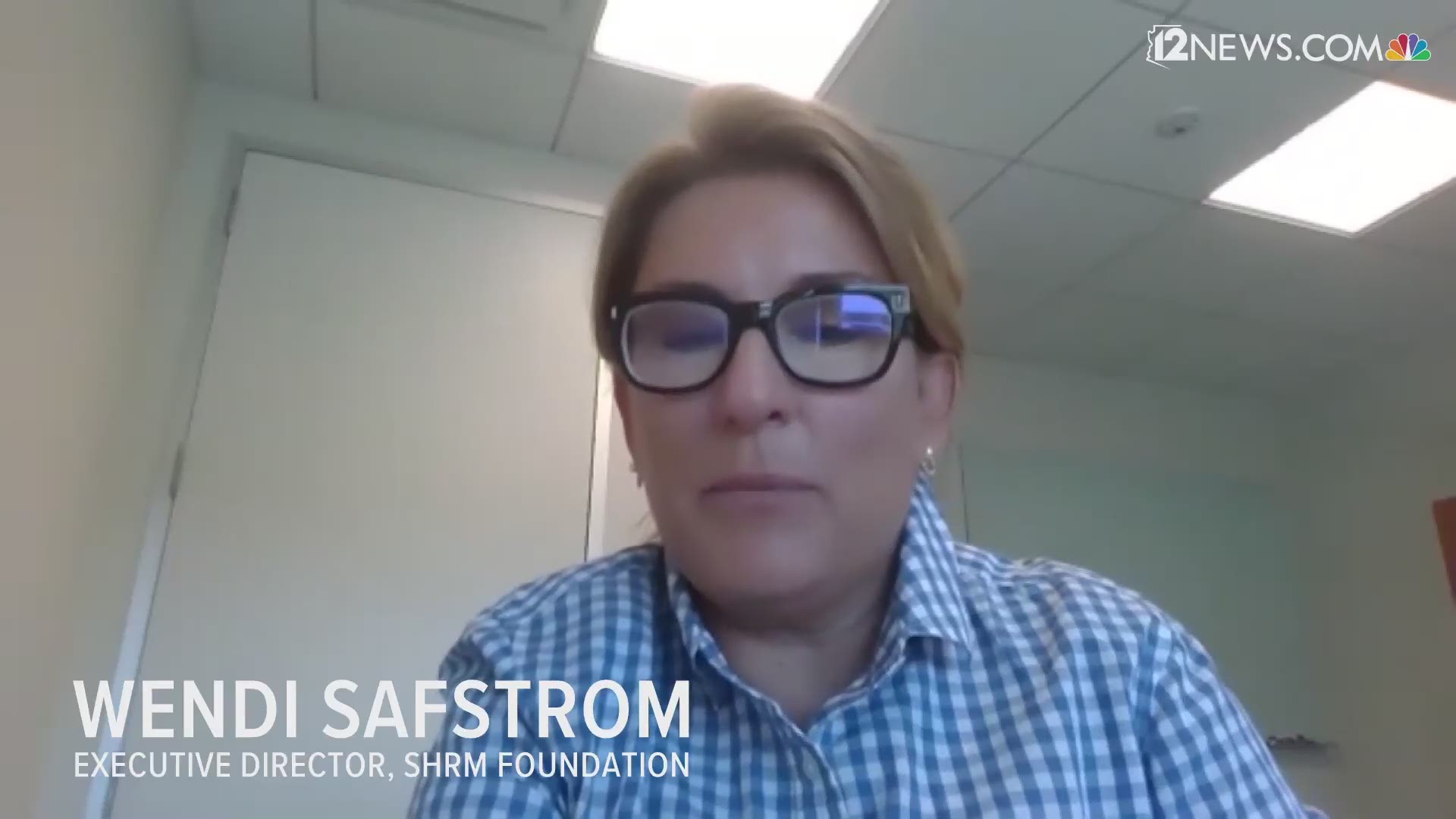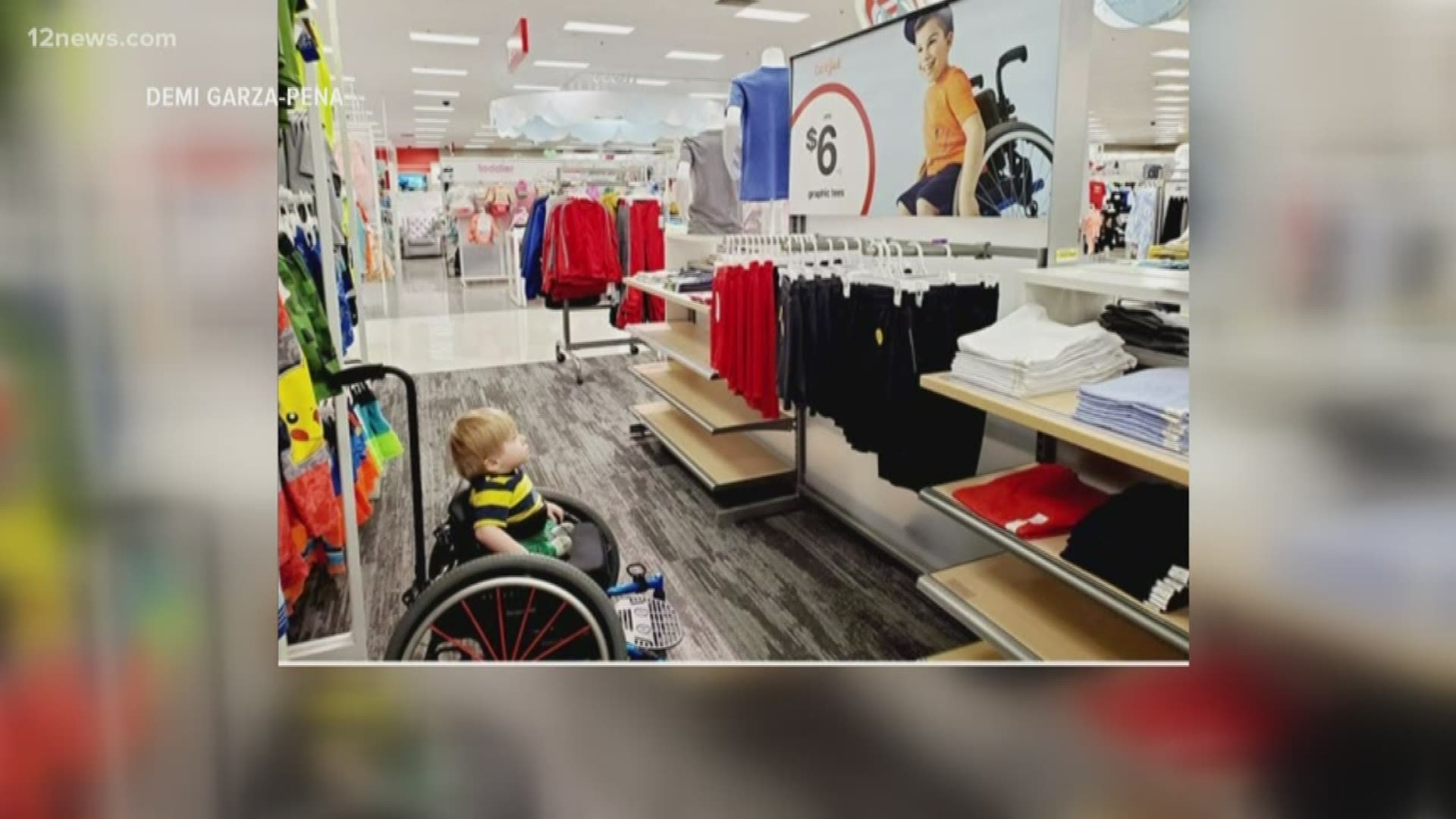PHOENIX — Nowadays, it’s a familiar routine. We climb out of bed to get ready for the workday, but instead of putting on our traditional work attire and heading to the office, we throw on a comfortable shirt and pants and head to the laptop in the living room.
The coronavirus pandemic has pulled many employees from the regular office setting and into a new remote work landscape. Over the last few months, businesses big and small have adapted to this new working-from-home reality, allowing work to continue during quarantine.
But while employees continue this new era of remote work during the fight against COVID-19, could there be a silver lining for those with disabilities?
“Remote work has experienced an increase and universal uptake in some sectors as a result of the pandemic,” said Wendi Safstrom, executive director of the Society for Human Resource Management Foundation. “This is an opportunity for us to really create, or future proof, sustainable work for people with disabilities.”
The foundation is the philanthropic arm of SHRM and provides extensive research and support to HR professionals to help make the workforce more inclusive, including employees with disabilities.
“People with disabilities are our most-practiced innovators, they spend most of every day solving problems, removing barriers and inventing ways of doing things,” Safstrom added. “With the success of remote work thus far, it’s likely that there will be increased opportunities for individuals with disabilities.”
According to SHRM research about the small business community, 82% of businesses are adopting a broader, more flexible work-from-home policy for all employees. Which could assist people with disabilities looking for remote work as a reasonable accommodation.
Jenny Panighetti, 38, has a mobility-related disability and is a web developer in California working for Netscout. Her company has transitioned to the work-from-home setting and she said she is enjoying the benefits of working from home.
"There's less of a commute and I feel more relaxed, she said. "Now whether it's a good or bad thing, I'm available more hours of the day."
Panighetti said she worked from home on Fridays before the pandemic, but being able to work from home with her husband now has been helpful if she required any assistance with personal tasks during the day.
Having the ability or option to work from home is a popular accommodation request from employees with disabilities. But working from home might add more benefits than easier access to technology.
Natalie Russo, 31, runs her own web design business, Russo Rox Designs, in Indiana and was diagnosed with Type 2 Spinal Muscular Atrophy at 18 months. Before she became a web designer she held a previous office job, but said working from home now has helped with her daily routine.
When she worked in the office, Russo said it was difficult having and aide come to her job to assist her with personal tasks like using the restroom.
“That was kind of something I didn’t like doing, it was kind of like a pride thing,” Russo said. “I always wanted to keep my professional status separate from my personal life.”
Russo added it was difficult to find aides to assist her for only a few minutes a day. Now that she is working from home, her aides can now also help her with tasks around the house.
According to data from the Job Accommodation Network (JAN), a service provided by the United States Department of Labor’s Office of Disability Employment Policy (ODEP), about 59% of accommodations cost nothing. And of those that cost money, 36% were a one-time cost with the median cost being $500.
Zach Zaborny, 30, is a community manager for SmartRent in Phoenix and is on the Autism spectrum. His job is based in an office, but the pandemic has forced him and his co-workers into working from home. It’s a new experience for him, but he said he can see the benefits of remote work.
“Working from home has allowed for fewer distractions and given me access to people I may not be able to reach in person,” he said.
Having Asperger's and being on the spectrum, Zaborny said that working from home has helped with his difficulty communicating in social situations.
“Working remotely has helped with some of the in-person dynamics like eye contact and direct interaction with people,” said Zaborny. “I don’t really have to worry about that if we’re chatting over a computer.”
When asked about the chances of an increase in hiring of disabled people after the recent success of remote work, both Russo and Zaborny said they hope this leads to more employment opportunities for those with disabilities. The pandemic continues and so does working from home, but only time will tell.
Companies like Aetna, Microsoft and Starbucks have seen success in hiring people with disabilities, according to AskEARN.org. According to the Department of Labor, the labor participation rate for people with disabilities is 20.2 percent compared to 67.2 percent for people without disabilities.
As we continue to navigate working from home, we continue to see how the workforce is adapting to the new remote work setting. According to SHRM’s Research on Navigating COVID-19: Return to the Workplace, five percent of organizations are more likely to hire individuals with disabilities than before the pandemic began.
This is a positive trend for people with disabilities, so we will have to see if this leads to more long-term changes in the workforce.


